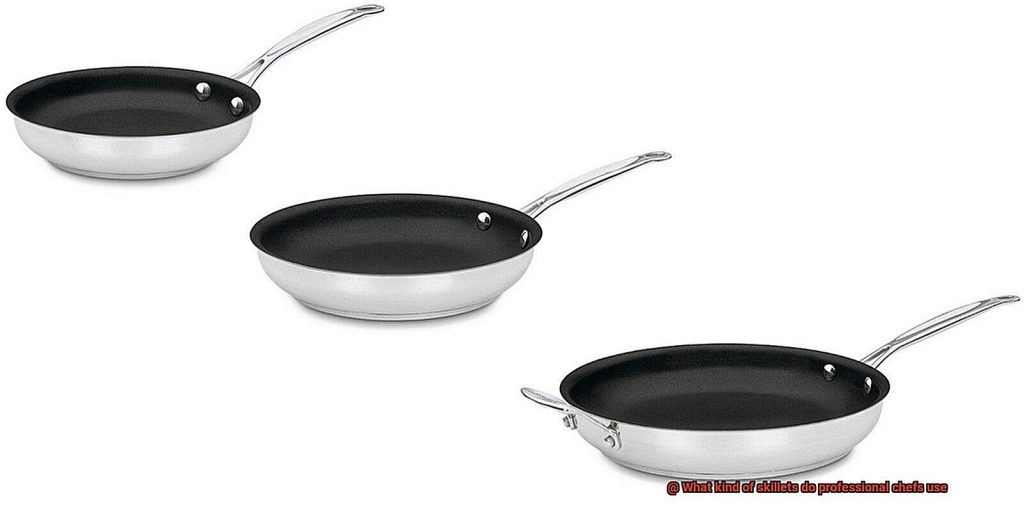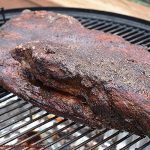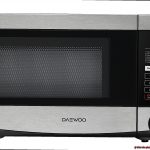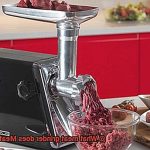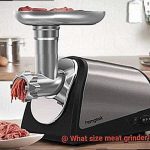Have you ever found yourself gazing at a professional chef’s skillet and wondering what makes it so special? As someone who spends hours upon hours cooking and preparing meals, it’s no surprise that they would use the best tools for the job. And when it comes to skillets, professional chefs have an array of options at their fingertips – each with its own unique features and benefits.
One of the most beloved skillets in a professional kitchen is undoubtedly the classic cast iron skillet. Its durability and heat retention make it perfect for searing meats and cooking dishes that require consistent heat. But don’t be fooled into thinking that’s all they use. Stainless steel skillets are also a popular choice among chefs, especially when it comes to cooking delicate foods like fish or vegetables.
And let’s not forget about non-stick skillets – many chefs swear by them for their effortless cooking and cleaning abilities. Copper skillets are also highly favored amongst professionals due to their quick and even heating capabilities.
But one thing is certain: professional chefs take their cookware seriously. They understand the importance of having the right tools to create delicious, restaurant-quality meals. So if you’re looking to elevate your cooking game, investing in a high-quality skillet might just be the key to unlocking your inner chef.
Contents
What Skillets Do Professional Chefs Use?
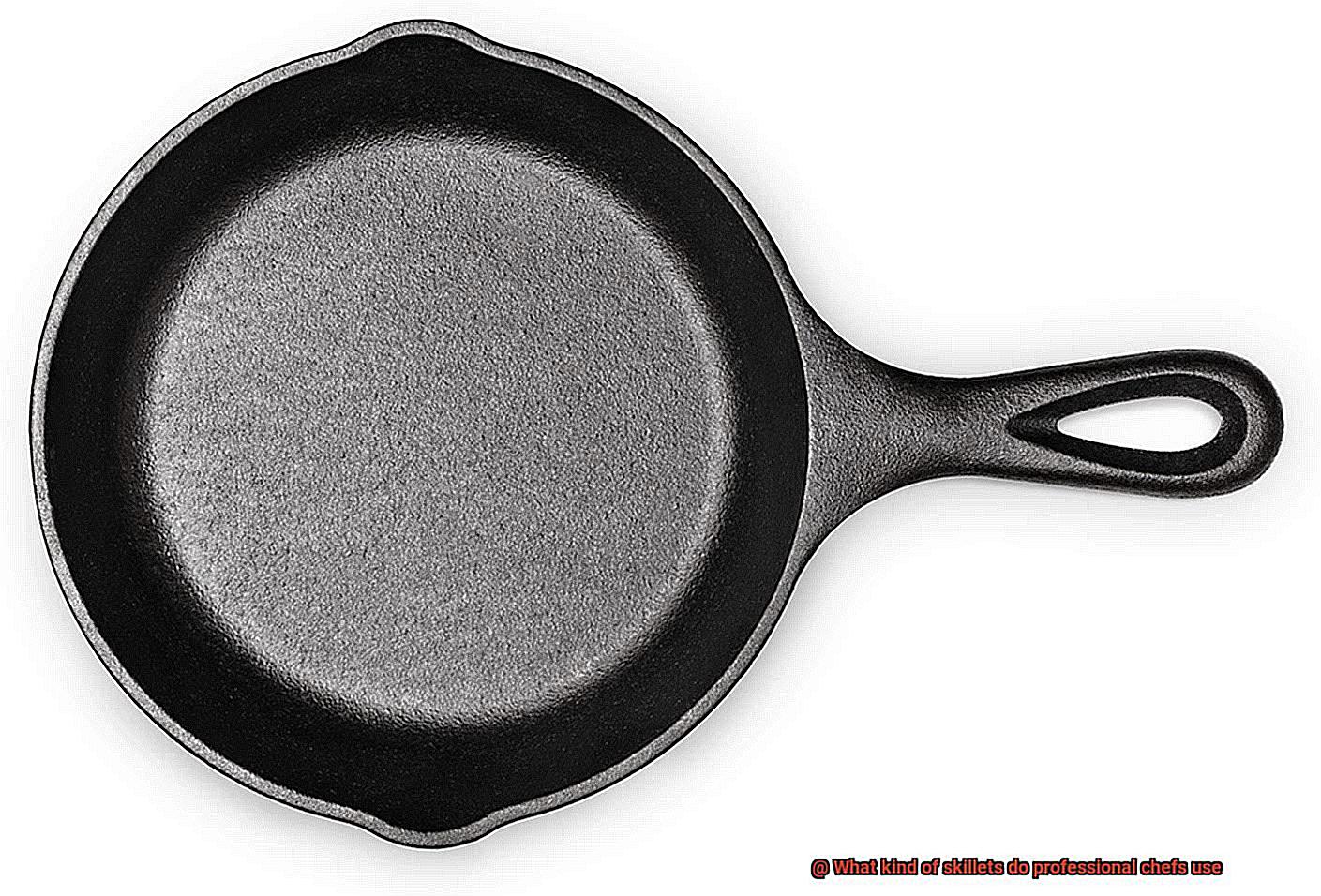
Skillets are a tried-and-true tool in any kitchen, but when it comes to professional chefs, they demand skillets that are specifically designed to meet their unique cooking demands. The material, size, and shape of the skillet are all crucial factors for professional chefs to consider when selecting their preferred skillet.
Cast iron skillets are a staple in many professional kitchens. They are known for their durability, even heating, and ability to retain heat, making them perfect for high-temperature cooking. Professional chefs appreciate cast iron skillets for their versatility, as they can be used on any stovetop surface, including gas, electric, and induction.
Stainless steel skillets are another popular choice among professional chefs. These skillets are lightweight, durable, and easy to clean. They also have a sleek appearance that makes them ideal for presentation purposes. However, stainless steel skillets don’t have the same heat retention properties as cast iron skillets and can be prone to hot spots.
Copper skillets are also a favorite among professional chefs due to their excellent heat conductivity and precise temperature control. Copper skillets also add a touch of elegance to any kitchen with their aesthetically pleasing appearance. However, copper skillets are expensive and require regular maintenance to keep them looking their best.
Professional chefs typically use skillets ranging from eight to twelve inches in diameter. This size range allows for versatility in cooking a variety of dishes while still being manageable enough to handle easily. Skillet shape is essential too; chefs often prefer sloping sides that allow for easy stirring and flipping of food. Additionally, a flared edge can help prevent spills and make pouring easier.
The Benefits of Cast-Iron Skillets
When it comes to choosing the right cookware, professional chefs and home cooks alike turn to cast-iron skillets for their many benefits. These heavy and sturdy skillets are made of cast iron, which provides even heat distribution and can withstand high temperatures. Let’s explore the reasons why cast-iron skillets are a must-have in any kitchen.
Firstly, cast-iron skillets are unbeatable when it comes to heat retention. They can maintain their temperature for an extended period, making them perfect for searing meats or dishes that require high heat. With their dense material, cast-iron skillets distribute heat evenly, making them ideal for cooking everything from pancakes to steak.
In addition to their heat retention, one of the best things about cast-iron skillets is their natural non-stick surface. When seasoned and maintained properly, they develop a non-stick surface that makes cooking and cleaning effortless. This means you can use less oil or butter in your cooking, resulting in healthier and more delicious meals.
Cast-iron skillets are also incredibly versatile. You can use them on the stovetop, in the oven, or even on the grill. They can be used for slow-cooking dishes without warping or cracking, making them perfect for casseroles or stews. Plus, they’re great for one-pot meals that require minimal cleanup.
Another significant advantage of cast-iron skillets is their durability. Unlike other types of cookware that may need frequent replacement, these skillets can last for generations with proper care. They can even be passed down as family heirlooms, making them a valuable investment in both your cooking and your family’s history.
The Benefits of Stainless Steel Skillets
These versatile and durable skillets offer numerous benefits that make them a favorite among professional chefs worldwide.
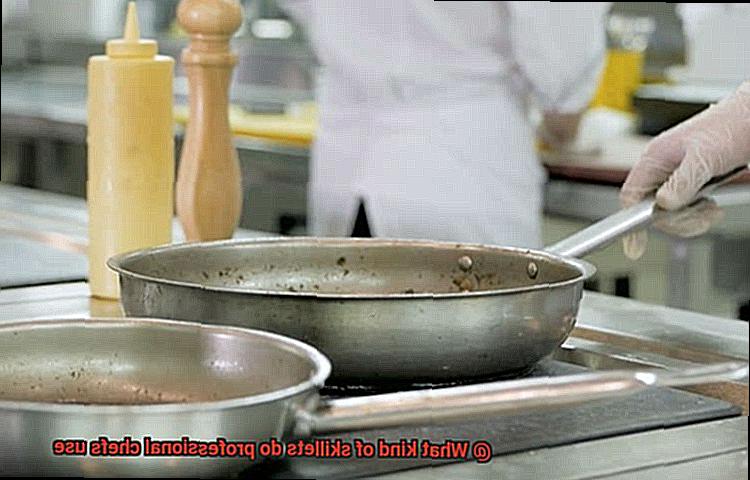
One of the key advantages of stainless steel skillets is their robustness. Made from high-quality materials, these skillets are resistant to scratches and dents, ensuring they can withstand the toughest cooking conditions. Whether you’re searing a steak or frying up some vegetables, stainless steel skillets are up for the task and will last for years to come.
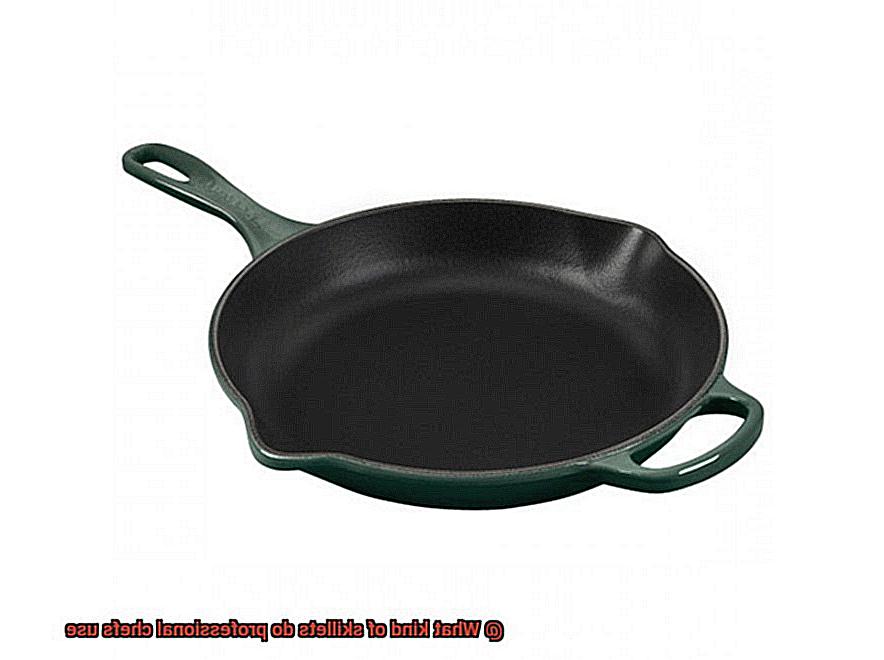
Stainless steel skillets are also incredibly versatile, as they work equally well on any type of stovetop, including gas, electric, and induction. This feature makes them an ideal choice for chefs who work in different kitchens with varying stovetops. Moreover, when you need to transfer your skillet from stovetop to oven, no problem. Stainless steel skillets can handle that too.
Furthermore, stainless steel skillets are non-reactive with acidic foods like tomatoes or vinegar. This means that they won’t corrode over time, making them a great long-term investment for any home cook or professional chef. You can cook your favorite acidic dishes without worrying about damaging your skillet.
Lastly, cleaning and maintaining stainless steel skillets is quick and easy. They are dishwasher safe and can also be hand washed with soap and water without requiring any special cleaning products or techniques. You don’t have to worry about spending hours scrubbing away at your skillet after each use.
The Benefits of Carbon Steel Skillets
One of the most significant advantages of carbon steel skillets is their exceptional heat conductivity. Thanks to their low thermal mass, they heat up quickly and distribute heat evenly across the cooking surface. This feature makes them ideal for searing meats and achieving a crispy crust on vegetables. Plus, they can handle high temperatures without warping or cracking, making them a valuable investment that will last for years.
Another advantage of carbon steel skillets is their versatility. They work on any stovetop, including induction, and can also be used in the oven. This versatility means you can use them for a wide range of cooking applications, from sautéing and stir-frying to baking and roasting.
In addition to their performance, carbon steel skillets are also easy to maintain. With regular seasoning, they develop excellent non-stick properties that make them perfect for cooking delicate foods like eggs and pancakes. And unlike some other materials, carbon steel skillets can withstand frequent use and still look great over time.
Of course, like any kitchen tool, carbon steel skillets require some attention and care. You should season them regularly to prevent rusting and ensure optimal performance. But with proper maintenance, these skillets can become a beloved kitchen tool that will last a lifetime.
Different Types of Cooking with Professional Chef’s Skillets
Professional chefs have an array of skillets at their disposal, each with its unique features and advantages. In this post, we explore the different types of skillets that professional chefs use and how they are suited for specific types of cooking.
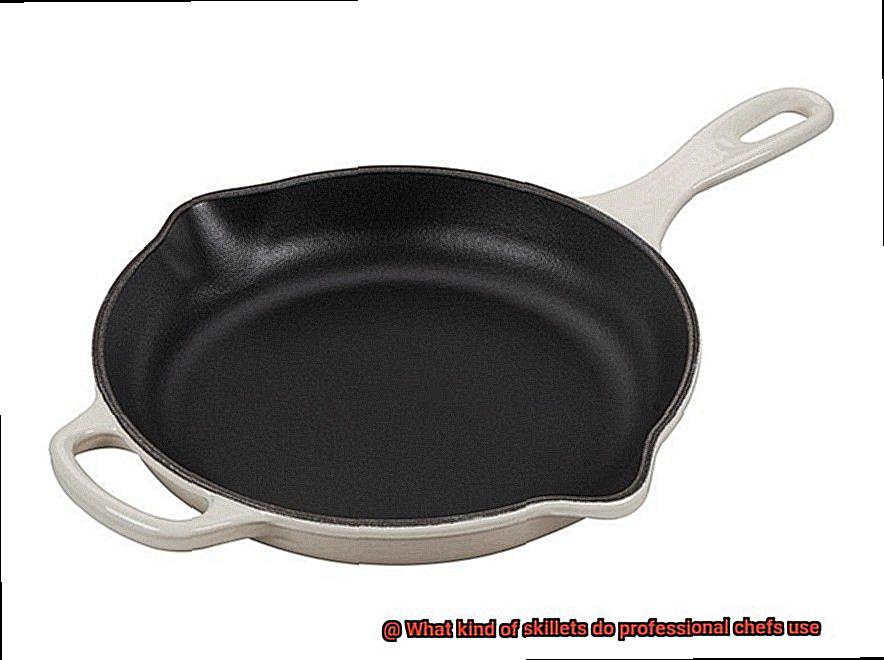
Stainless Steel Skillets: Durability and Versatility
Stainless steel skillets are a favorite among professional chefs because they are durable and versatile. They heat up quickly and evenly, making them perfect for searing steaks, fish, and vegetables. Stainless steel skillets are also non-reactive, meaning they won’t react with acidic foods like tomatoes or vinegar. Additionally, they are oven-safe and can withstand high temperatures, making them perfect for finishing dishes in the oven.
Cast Iron Skillets: Heavy-Duty and Even Heat Distribution
Cast iron skillets are heavy-duty and perfect for high-heat cooking. They distribute heat evenly and retain heat well, making them ideal for cooking stews, soups, and frying chicken. Cast iron skillets come pre-seasoned or require seasoning before using them. They are also oven-safe, making them perfect for baking cornbread or other dishes that require a crispy crust.
Non-Stick Skillets: Easy to Clean and Healthy Cooking
Non-stick skillets are ideal for delicate foods like eggs or pancakes that can easily stick to the pan. They require less oil than other types of skillets, making them an excellent choice for healthy cooking. They are also easy to clean since food doesn’t stick to the skillet’s surface, making them a favorite among busy professional chefs.
Copper Skillets: Excellent Heat Conductivity
Copper skillets are known for their exceptional heat conductivity, allowing precise temperature control when cooking. They are perfect for making delicate sauces and sautéing vegetables. However, copper skillets can be expensive and require regular maintenance to keep them looking new.
Carbon Steel Skillets: High-Heat Cooking and Versatility
Carbon steel skillets are light-weight, durable, and perfect for high-heat cooking. They can be used on both stovetops and in ovens, making them versatile in the kitchen. Carbon steel skillets are also easy to season and maintain, making them a favorite among professional chefs.
Specialized Skillets: Paella Pans, Woks, Crepe Pans
In addition to the standard skillets, professional chefs also use specialized skillets like paella pans, woks, and crepe pans for specific dishes. Paella pans are shallow and wide, allowing for even cooking of rice dishes like paella. Woks are perfect for stir-frying meats and vegetables with high heat. Crepe pans have low sides to make flipping delicate crepes easier.
Maintaining and Cleaning Professional Chef’s Skillets
As a professional chef, your skillets are more than just cooking tools – they’re investments that require proper maintenance and cleaning to ensure their longevity and quality. With a variety of materials to choose from, such as stainless steel, cast iron, and carbon steel, it’s important to follow general guidelines for maintaining and cleaning these essential kitchen items.
To start off, seasoning your skillet is a must before use. This involves coating the surface with oil and heating it until it becomes non-stick. By doing so, you create a protective layer that prevents rust and makes cleaning a breeze. After each use, wipe down your skillet with a clean cloth or paper towel to remove any excess oil or food particles.
Stubborn stains can be tackled with a scouring pad or brush using hot water and soap, but avoid abrasive cleaners or metal utensils that could scratch the surface of your skillet. If you’re using stainless steel skillets, consider using a stainless steel cleaner to maintain their shine and prevent discoloration.
When it comes to cast iron skillets, washing them with soap is a no-go as it can remove the seasoning layer. Instead, rinse them with hot water and use a stiff brush to remove any food particles. And don’t forget to re-season your skillets periodically. This involves applying a thin layer of oil to the skillet and heating it until it becomes shiny.
In summary, maintaining and cleaning professional chef’s skillets requires attention to detail and proper techniques. To make things easy, here’s a quick checklist:
- Season your skillet before use
- Wipe down after each use
- Tackle stubborn stains with hot water and soap (avoid abrasive cleaners or metal utensils)
- Use stainless steel cleaner for stainless steel skillets
- Rinse cast iron skillets with hot water (no soap.)
- Periodically re-season your skillets
Tips for Choosing the Right Professional Chef’s Skillet
As a professional chef, choosing the right skillet is crucial to ensuring that your dishes are cooked to perfection. With so many options on the market, it can be overwhelming to decide what factors to consider. Here are some key factors to keep in mind when choosing a professional chef’s skillet:
Material
The material of the skillet is arguably the most important factor to consider. You want a skillet that is durable and can withstand high temperatures without warping or cracking. Cast iron, stainless steel, and copper are popular choices among chefs. Cast iron skillets are incredibly durable but can be heavy and require seasoning. Stainless steel skillets are easy to clean but do not hold heat as well as cast iron or copper skillets. Copper skillets are known for their excellent heat conductivity but can be expensive.
Size
Size matters when it comes to choosing a professional chef’s skillet. Chefs often prefer larger skillets because they can accommodate more food and allow for even cooking. However, it’s important to choose a size that is appropriate for your needs and the size of your stove burners. Most chefs prefer skillets that are at least 10 inches in diameter.
Shape
The shape of the skillet is also important. Many chefs prefer skillets with flared sides, as they make it easier to toss and flip food while cooking. A flat bottom is also important for ensuring even heat distribution.
Handle Comfort
The handle of the skillet is an often-overlooked factor but can make a big difference in ease of use. Professional chefs prefer skillets with long handles that stay cool to the touch, allowing for easy maneuvering and flipping of food without the risk of burns. Some skillets also come with a second handle on the opposite side for added stability when carrying or pouring.
Brand Reputation
When investing in a professional chef’s skillet, it’s important to consider the reputation of the brand. Look for brands that are known for their quality and durability, with positive reviews from other professional chefs.
DzU40opo_x8″ >
Conclusion
To sum up, professional chefs know that having the right cookware is essential in creating mouth-watering restaurant-quality dishes. Skillets are a vital tool in any kitchen, and there’s no shortage of options available to chefs. Cast iron skillets are a go-to for their robustness and heat retention, while stainless steel skillets are preferred for cooking delicate foods like fish or vegetables. Copper skillets are highly favored by professionals due to their quick and even heating capabilities, while non-stick skillets make cooking and cleaning a breeze.
When selecting a skillet fit for a professional chef, it’s important to consider key factors such as material, size, shape, handle comfort, and brand reputation. Proper maintenance and cleaning will ensure your skillet lasts for years to come.
Investing in high-quality skillets can transform your culinary skills from ordinary to extraordinary. Whether you’re an aspiring home cook or an experienced chef looking to up your game, choosing the perfect skillet can make all the difference in creating delicious meals that impress your guests or family.

